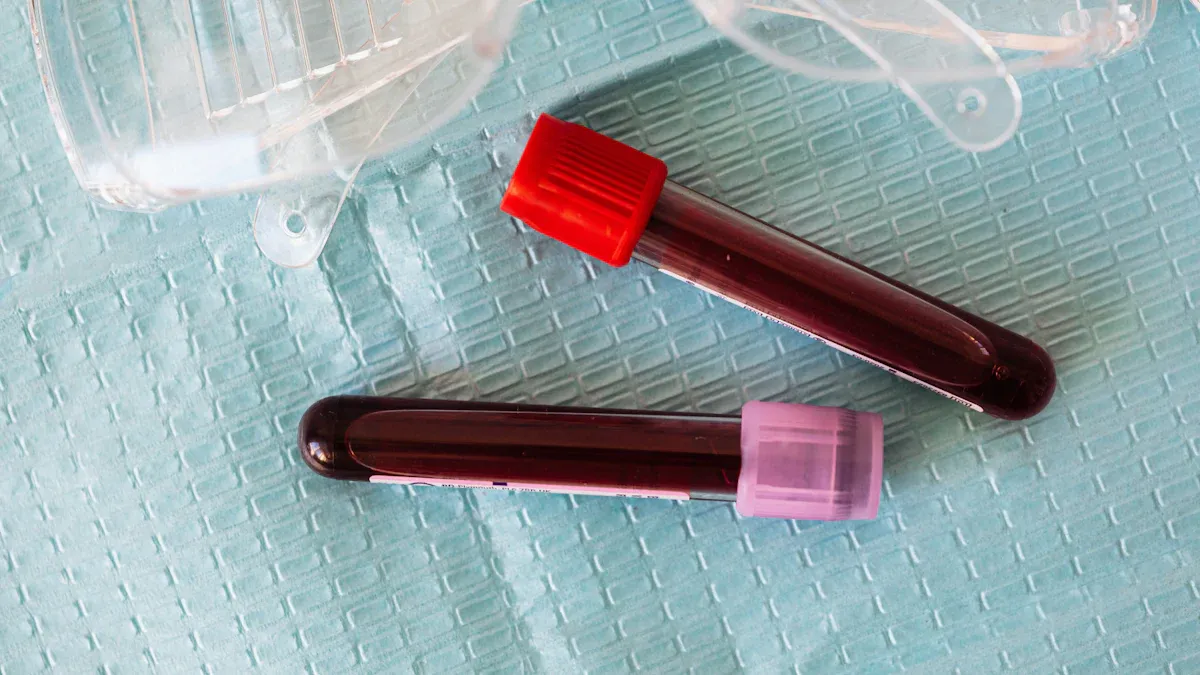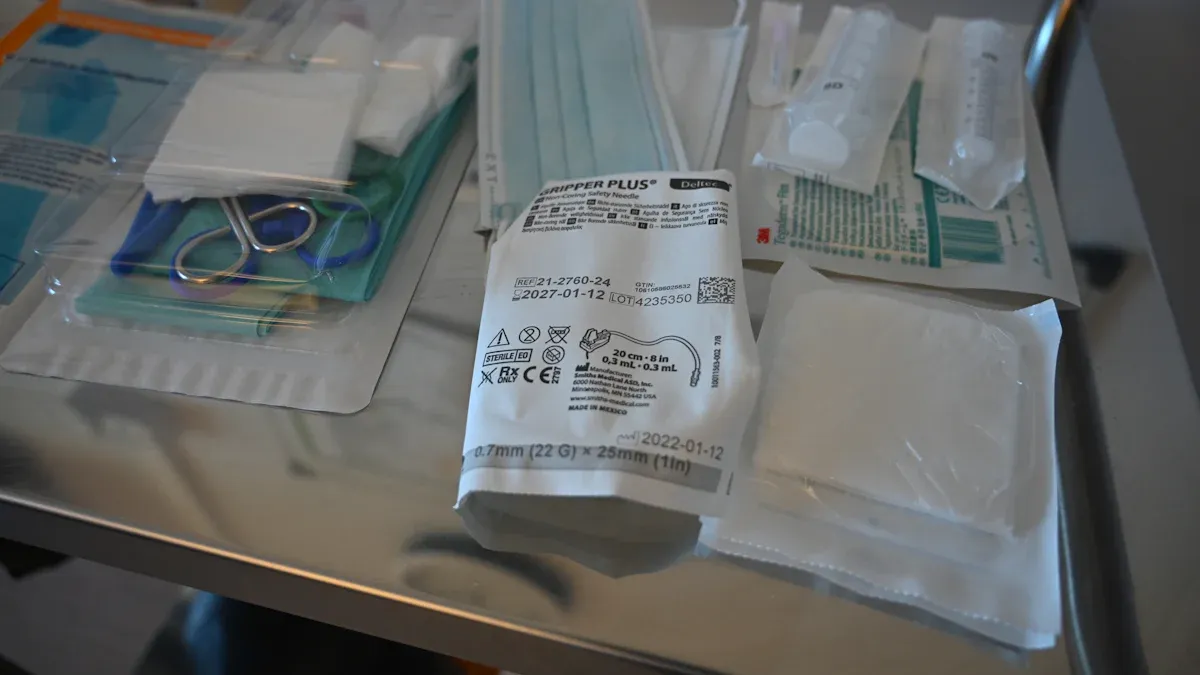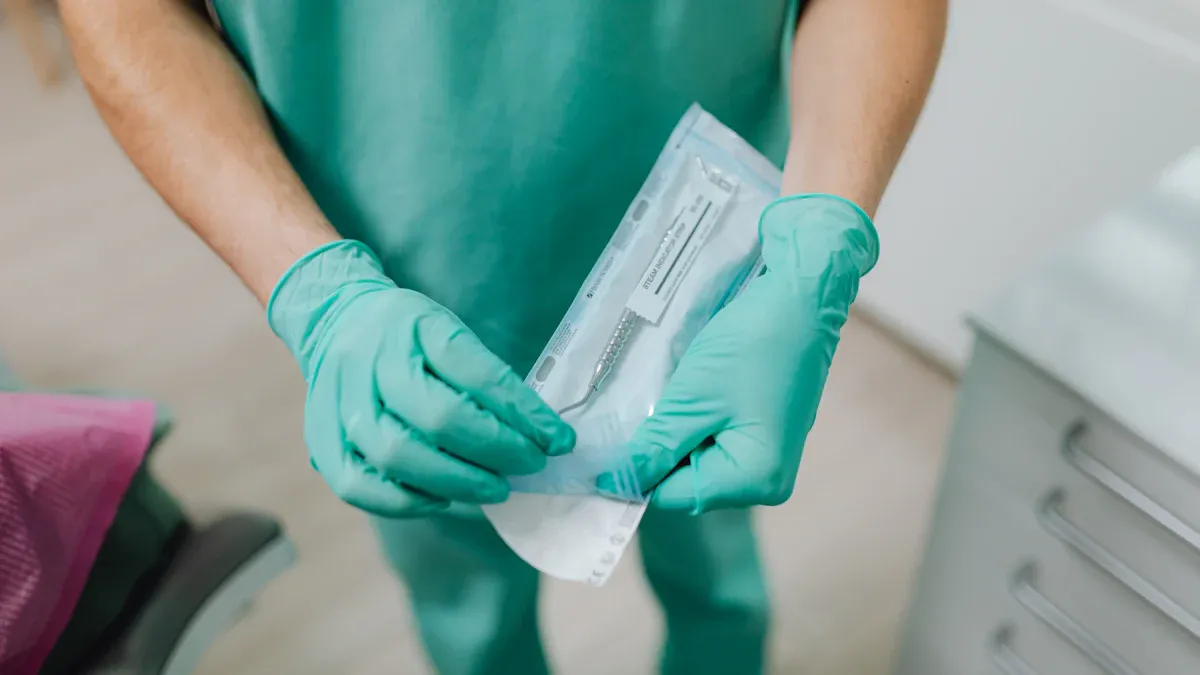How PET Shrink Tubing Ensures ETO Sterilization Compatibility

When making medical devices, you need safe and strong materials. ETO gas compatible medical PET shrink tubing is a great option for this. It has special features like being tough and resisting chemicals. These help it handle strict cleaning methods like ETO gas sterilization. This is important to keep medical devices safe and reliable. Other materials like MD85-PVC and MD70-NP-PVC are also strong. They can go through ETO sterilization without breaking. AccuPath’s ETO gas compatible medical PET shrink tubing works well with ETO gas and meets high medical standards.
Key Takeaways
PET shrink tubing is tough and resists chemicals, perfect for medical tools cleaned with ETO sterilization.
Picking PET tubing keeps medical tools strong and safe after many cleanings.
AccuPath’s PET tubing follows strict rules, making it safe for patients.
Using ETO-safe materials like PET tubing lowers infection risks in treatments.
PET shrink tubing makes medical tools last longer and work better, improving patient care.
Understanding PET Shrink Tubing

What is PET Shrink Tubing?
PET shrink tubing is made from a plastic called polyethylene terephthalate. It shrinks tightly around objects when heated, forming a strong cover. This tubing is often used in medical tools because it meets strict rules like ISO 17665-1:2023. These rules make sure it can handle high heat without breaking. You’ll see it in things like drug delivery devices and robotic surgery tools. Its strength and insulation are very important for these uses. When choosing this tubing, size, thickness, and shrink ratio matter. For medical tools, a 2:1 or higher shrink ratio is best.
Key Properties of PET Heat Shrink Tubing
PET heat shrink tubing has many features that help in making medical tools. It strengthens parts like catheter shafts, giving them different stiffness levels. It also stops electricity from going the wrong way in surgical tools. Its tough surface protects parts from damage during use or cleaning. The tubing is safe for the body and doesn’t harm tissues. This makes it safe for patients during procedures. It works with cleaning methods like autoclaving and gamma rays, making it very reliable.
Importance in Medical Device Manufacturing
PET heat shrink tubing is key to making safe and strong medical tools. It can handle tough cleaning methods like ETO gas sterilization. This makes it a top choice for manufacturers. The tubing’s strength and resistance to chemicals keep devices safe during use. For example, it helps catheters stay strong and keep their shape under pressure. It also insulates surgical tools, making them safer to use. Using PET heat shrink tubing improves the quality and life of medical tools. This helps patients get better care and results.
The Role of ETO Gas Sterilization
Why ETO Sterilization is Important for Medical Devices
ETO sterilization helps keep medical devices safe to use. It kills harmful germs like bacteria, viruses, and fungi. This is especially useful for tools with small or tricky parts, like catheters or surgical instruments. Other cleaning methods might not reach all areas, but ETO gas does. It ensures these tools are clean and lowers the chance of infections.
ETO gas is gentle on delicate materials. It cleans without causing damage, making it great for plastic or heat-sensitive tools. It can also go through packaging, keeping devices sterile until they’re needed.
Advantages of ETO Gas Sterilization
ETO gas sterilization has many benefits, such as:
Cleaning at low temperatures to protect sensitive materials.
Working with different materials like plastics, metals, and electronics.
Reaching hard-to-clean designs and sealed packaging.
Some places now use Hydrogen Peroxide Gas Plasma (HPGP) instead. HPGP works faster and leaves no harmful waste. But ETO is still the best choice for fragile materials that need extra care.
Material Challenges in ETO Sterilization
ETO sterilization can be tough on some materials. For example, certain materials lose strength after being sterilized. Studies show that ETO-treated silk threads break under less pressure than untreated ones. This shows why it’s important to pick materials, like PET shrink tubing, that stay strong after sterilization.
Using ETO-compatible materials ensures medical tools stay safe and work well, even after tough cleaning processes.
Compatibility of PET Shrink Tubing with ETO Sterilization
Chemical Resistance and Durability
PET heat shrink tubing is strong and resists harsh chemicals. This makes it great for medical tools. During ETO sterilization, materials face tough conditions. PET tubing stays strong and works well. This keeps medical devices safe to use.
The tubing’s strength also protects it from damage. It resists scratches, holes, and impacts. This is important for tools used often and cleaned many times. PET tubing can handle many sterilization cycles without breaking. The table below shows how its features support durability and chemical resistance:
Evidence Description | Key Property Supported |
|---|---|
PET heat shrink tubing resists chemicals and tough cleaning processes. | Chemical resistance and durability during ETO sterilization |
The tubing keeps catheters and guidewires strong and intact. | Maintains structural integrity during sterilization |
Its tough design prevents scratches, holes, and damage. | Protects against physical damage and wear |
PET lasts through many sterilization cycles without breaking. | Longevity and performance maintenance |
Structural Integrity During Sterilization
Keeping medical tools strong during cleaning is very important. PET heat shrink tubing helps tools like catheters stay in shape. It works well under the tough conditions of ETO sterilization. This makes it a top choice for manufacturers.
The tubing can handle stress from chemicals and temperature changes. It doesn’t crack, bend, or lose its insulating ability. This keeps medical tools safe for patients. PET tubing’s strength also makes it useful for many medical purposes.
Features of AccuPath’s PET Heat Shrink Tubing
AccuPath’s PET heat shrink tubing has special features for ETO sterilization:
Resists chemicals, making it perfect for ETO sterilization.
Stays stable and insulates well for up to 18 months.
Handles heat and shrinks at low temperatures, protecting delicate parts.
These features make AccuPath’s tubing a trusted option. It stays strong and reliable during cleaning. This helps medical tools meet top safety and quality standards.
Applications in Medical Devices

Common Medical Devices Using PET Shrink Tubing
PET heat shrink tubing is used in many medical tools. It’s found in catheters, guidewires, and surgical instruments. The tubing shrinks tightly to fit parts securely. This is important for tools used in delicate procedures. Drug delivery systems also use PET tubing to protect fragile parts and stay strong.
Robotic surgery tools benefit from PET tubing’s insulation and toughness. It stops electrical problems and helps tools work smoothly. Cardiovascular devices also use PET tubing to strengthen parts. This improves their performance during repeated use.
Benefits of ETO Compatibility in Medical Applications
ETO sterilization makes PET tubing great for medical tools. It stays strong and works well after cleaning with ETO gas. This keeps devices safe and reliable for patients.
PET tubing resists chemicals and lasts through many cleaning cycles. It stays strong even under tough ETO sterilization conditions. This is important for tools like catheters and surgical instruments that need to work consistently.
Tip: Picking materials like PET tubing that handle ETO sterilization can make medical tools safer and last longer.
AccuPath’s Contribution to Medical Device Manufacturing
AccuPath improves medical tools with its high-quality PET tubing. The tubing’s strength and chemical resistance make it perfect for ETO sterilization. AccuPath ensures its tubing meets strict safety and quality rules.
AccuPath also offers other solutions, like nitinol tubing. Nitinol is very flexible and strong, which helps cardiovascular tools last longer. Its ability to change shape and stretch makes it great for small surgeries. Nitinol stays reliable even after being used many times.
AccuPath’s tubing helps create medical tools that focus on patient safety. Their products meet the needs of modern medical technology.
Compliance with Medical Standards
Biocompatibility and Safety Standards
PET heat shrink tubing helps keep patients safe during procedures. It is biocompatible, meaning it can touch tissues and fluids safely. This lowers the chance of bad reactions. PET tubing follows ISO 10993 and USP Class VI rules. These prove it is safe for medical tools and devices.
The tubing is strong and reliable in tough conditions. It resists chemicals and stays durable after cleaning methods like ETO sterilization and gamma rays. This keeps medical tools working well even after many cleanings.
Tip: Pick materials that meet biocompatibility rules to make devices safer and more reliable.
Regulatory Compliance for Sterilization
Following rules is important for medical tools. PET heat shrink tubing meets strict global standards for cleaning methods. For example, FDA rules under 21 CFR Part 820 require proof of material safety and cleaning compatibility. CE marking under EU MDR 2017/745 needs detailed paperwork to sell products in Europe.
The table below shows key compliance facts:
Compliance Type | Requirement | Impact |
|---|---|---|
FDA Certification | 21 CFR Part 820 | Proof of material safety and cleaning compatibility affects market access. |
CE Marking | EU MDR 2017/745 | More paperwork needed; non-compliance leads to market exit. |
Biocompatibility Testing | ISO 10993 | Speeds up FDA approval, giving a competitive edge. |
Financial Impact | Non-compliance | 28% drop in stock price for non-compliant suppliers in 2023. |
Premium Pricing | FDA/CE/MHLW approvals | Allows 35% higher pricing in special markets. |
By meeting these rules, PET tubing gets approvals and helps make safe medical tools.
AccuPath’s Commitment to Quality Assurance
AccuPath focuses on quality to make great PET heat shrink tubing. Their tubing meets ISO 10993 and USP Class VI standards, proving it is safe for medical use. They test their products carefully to ensure size, thickness, and heat resistance stay consistent.
The table below shows AccuPath’s quality checks:
Quality Control Metrics | Details |
|---|---|
Diameters | 0.006"–0.020" (±0.001", typical); 0.021"–0.5" (±5%, typical) |
Wall Thickness | 0.0001"–0.0005" (±0.0001", typical); 0.0006"–0.004" (±20%, typical) |
Temperature Range | -196°C to 135°C (long-term); Up to 200°C (short-term); Melting: 235°C |
Electrical Properties | Dielectric strength: >4,000 V/mil; Volume resistivity: 10^18 Ohm-cm |
Sterilization Methods | Ethylene oxide, Gamma radiation, Autoclaving |
Biocompatibility | Meets ISO 10993 standards |
AccuPath’s focus on quality makes their tubing dependable for medical use. Their dedication to safety and rules makes them a trusted choice for medical device makers.
PET heat shrink tubing is important for making medical tools. It stays strong after cleaning, keeping devices safe for patients. The tubing is made to last and works well in tough conditions. For example, it keeps its stretchability above 80% after cleaning. This helps tools work properly during surgeries. Its biocompatibility and meeting ISO 10993 and USP Class VI rules make it safer for medical use.
AccuPath’s PET heat shrink tubing is a reliable choice for makers. It resists wear and stays strong, making it great for nerve and heart tools. Picking AccuPath’s tubing ensures your medical tools meet top safety and quality standards.
Note: PET tubing’s strength and ability to handle ETO sterilization make it key to modern medical tools.
FAQ
Why is PET shrink tubing good for ETO sterilization?
PET shrink tubing stays strong and resists harsh chemicals. It keeps medical tools safe and reliable after cleaning. These features make it a top choice for manufacturers.
Can PET shrink tubing survive many sterilizations?
Yes, PET shrink tubing can handle many cleaning cycles. It stays strong and doesn’t wear out, keeping medical tools safe to use for a long time.
Is PET shrink tubing safe for patients?
PET shrink tubing follows ISO 10993 and USP Class VI rules. It is safe to touch tissues and fluids, lowering the chance of bad reactions during procedures.
How does PET shrink tubing help medical tools work better?
PET shrink tubing makes tools like catheters stronger and safer. It protects parts from damage, stops electrical problems, and lasts longer, making tools more dependable.
Why pick AccuPath’s PET shrink tubing?
AccuPath’s PET shrink tubing is tough and meets strict medical rules. It keeps over 88% of its strength after 50 cleanings, making it a trusted choice for quality medical tools.
See Also
Essential Insights on PET Heat Shrink Tubing for Electronics
Key Uses of Ultrathin PET Heat Shrink Tubing in Medicine
The Importance of Ultra-Thin PET Tubing in Healthcare Devices

